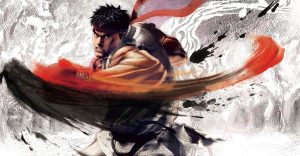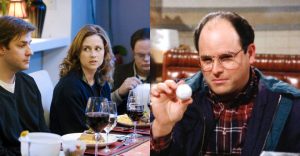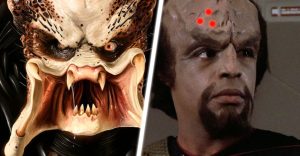Downton Abbey: 6 Things That Were Historically Accurate About The Costumes (& 4 That Weren’t)

Downton Abbey is famous around the world for its historically accurate period costumes. Thanks to lead costume designers Susannah Buxton, Rosalind Ebutt, Caroline McCall, and Anna Robbins, characters both upstairs and downstairs dressed impeccably in the styles of the 1910s and the 1920s.
However, there were times when the costume designers used their artistic license to create looks that never would have seen the light of day in 1920 but appealed more to contemporary audiences. Below are 6 things that were historically accurate about the costumes of Downton Abbey and 4 that were the product of our modern times.
10 Accurate: Austerity during the war

There was a stark difference between the costumes of the first and second seasons of Downton Abbey. Matthew and Lord Grantham, who wore white tie for dinner scenes without fail in Season 1, now appeared in mess dress, or even in an extremely informal dinner jacket. Among the Crawley sisters, Sybil mentions that most of her gowns were from the season before the war, suggesting that she had not ordered anything new since then.
Meanwhile, Mary, Edith, and Cora appeared in costumes that were plainer and more pared down with fewer costume changes and a limited selection of evening gowns. These changes reflected the real-life impact the war had on fashion.
9 Accurate: They showed generational differences

Women’s fashions changed tremendously during the war. Hemlines rose above the ankle, and waist-defining gowns were slowly phased out in favor of looser fits that allowed for greater mobility. While the Crawley girls embraced the latest fashions, the older generation was slower to change. Violet, the Dowager Countess, continued to wear Edwardian gowns with a corset even in 1927, albeit with more modern textiles and art deco patterns.
Cora was somewhere in between her daughters and her mother-in-law; she discarded the corset for a dropped waist but retained some autonomy in the draping and embroidery of her clothes. As Anna Robbins said, “She follows trends, but she’s never been a slave to them.”
8 Accurate: They showed a social pecking order

Dressing and undressing was a daily ritual at the Abbey. The Crawley family changed clothes multiple times a day to adhere to a strict dress code that required different garments in the mornings, afternoons, and evenings. The Crawley servants, on the other hand, almost always wore their livery and rarely had a change of costume, creating a pecking order of sorts in real life.
Leslie Nicol, who plays Mrs. Patmore, had the same cap for six years and considered it a favorite, refusing a replacement even when offered. In contrast, Joanne Froggatt, who plays lady’s maid Anna, often looked over enviously at Lady Mary’s expansive wardrobe full of beautiful Edwardian and Art Deco dresses.
7 Inaccurate: The corsets were the wrong shape

u/chocolatepot makes an astute observation about the corsets in Downton Abbey and specifically the one Lady Mary is getting laced into at the beginning of Season 1. They note that the typical corset of the Edwardian era would have been much longer than Mary’s, ending at mid-hip and providing a smooth line under the narrow skirts that were fashionable during that time.
More importantly, Edwardian corsets barely offered any support, ending at mid-bust or below, as the fashionable bustline was much lower than it is today. Mary’s corset (and the silhouette it gives her) is historically inaccurate in that it appears designed to lift her bust into place.
6 Inaccurate: The hemlines were low for 1927

Hemlines gradually rose during World War I and in the years following the Treaty of Versailles. According to The World Of Downton Abbey, hemlines were six inches off the ground by 1916 and another two inches higher by the end of the war. By 1927 they were a shocking 18.6 inches off the ground, flashing the knees.
While hemlines were actually at their highest in 1927, the costume designers didn’t think skirts of such a short length were appropriate for a visit from the royals and so added a few more inches to the evening gowns for the ballroom scenes in Downton Abbey: The Movie.
5 Accurate: The downstairs livery

The footmen were the real showpieces of a great house like Downton Abbey, and their uniforms provided by the family at great expense. Anna Robbins spoke about the attention to detail that went into crafting the livery, noting that the Grantham crest on the buttons were tiny models created in a very involved process for something that would hardly show up on camera.
Because the livery was considered a mark of status, the footmen would go to great lengths to protect it, such as hanging up their tails and changing into a different coat in the servants’ area to preserve their white shirts, as Thomas and William did in Season 1.
4 Accurate: Hat etiquette

In the 1910s and 1920s, it was proper etiquette to wear hats indoors when calling on a friend or relative. Combined with a standard protocol of keeping the head covered outdoors, women would often put on a hat when leaving the house and not take it off again until they returned home.
Because a hat was meant to flatter the wearer’s hairstyle, it made sense for aristocratic women to put on their hats and remove them with the help of a lady’s maid in their bedrooms instead of at the front door. Mary used this custom as an excellent excuse to leave a potentially awkward conversation in Season 5. Good for her!
3 Inaccurate: A 21st-century audience

No matter how much Julian Fellowes and historical advisor Alistair Bruce tried to adhere to historical accuracy, Downton Abbey still has a modern audience, and occasionally the costumes were adjusted to suit 21st-century sensibilities. One example is Lady Mary’s corset, as discussed above; another happens to be Mary’s blue Fortuny dress, which Anna Robbins created from scratch for actress Michelle Dockery.
The dress features a plunging V-neck, which looks wonderful on Dockery but is not consistent with the original design of the Delphos dress. Fortuny modeled his Delphos design on Classical Greek tunics like those seen on the Charioteer of Delphi, which had plenty of pleats and a high neckline that covered the decolletage.
2 Accurate: Queen Mary’s jewels

In Downton Abbey: The Movie, the Crawleys have taken a break from their normal routine to prepare for a visit from King George V and Queen Mary. The storyline presented some challenges in the costume department, as the standard for accuracy was higher for historical figures. Anna Robbins referred to real-life photographs of the royals from 1927 for her designs.
She dressed King George in a scarlet field marshal uniform for one scene that contained various decorations and medals that were sourced as originals or replicated. For Queen Mary, she came up with the theme of metallic lace and created replicas of her extensive jewelry collection, including the Vladimir tiara that remains a favorite of the current Queen Elizabeth.
1 Inaccurate: They were sometimes off by a few decades

As mentioned before, Downton Abbey occasionally sacrificed historical accuracy for the sake of appealing to a 21st-century audience — or to make a visual impact. For instance, in the hunting sequence during the Season 2 Christmas Special, the former editor of a hunting magazine noted that the men’s outfits were several decades out of date.
Designer Susannah Buxton also put Lavinia Swire in a green chiffon gown in Season 2 that was about a decade ahead of its time. “It was probably a bit premature to use a ’20s dress,” she admitted. “But she was very young and would have been at the height of fashion. You have to sometimes. The impact is worth it.”
About The Author

















